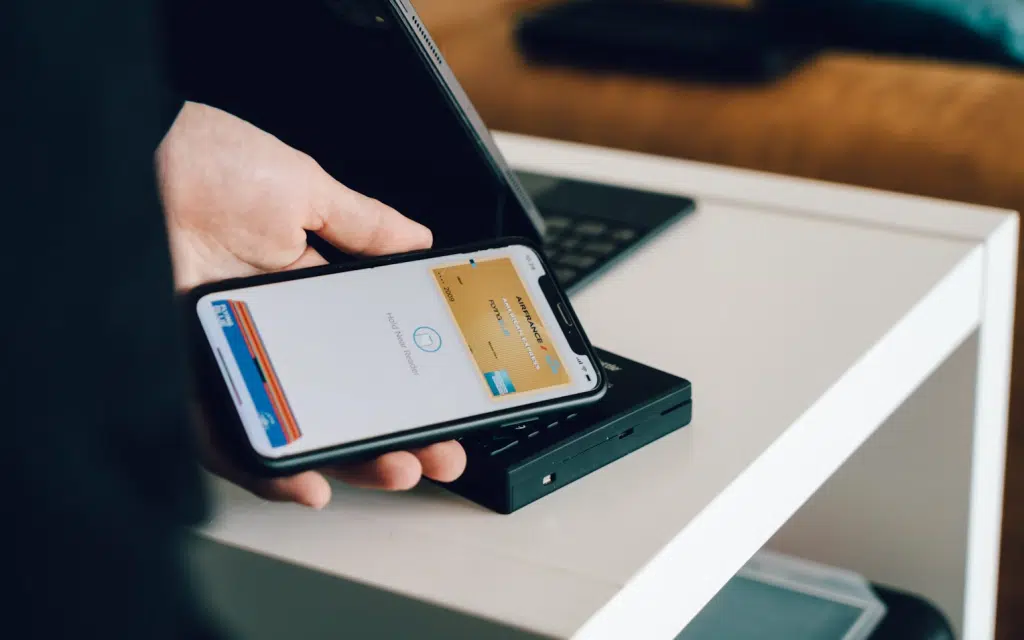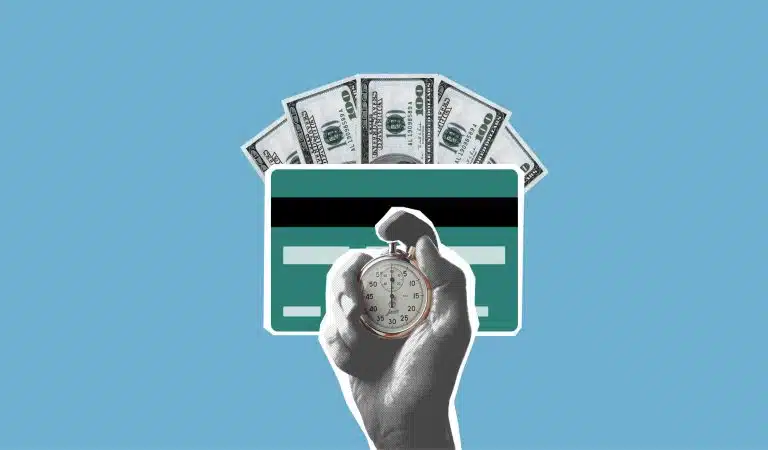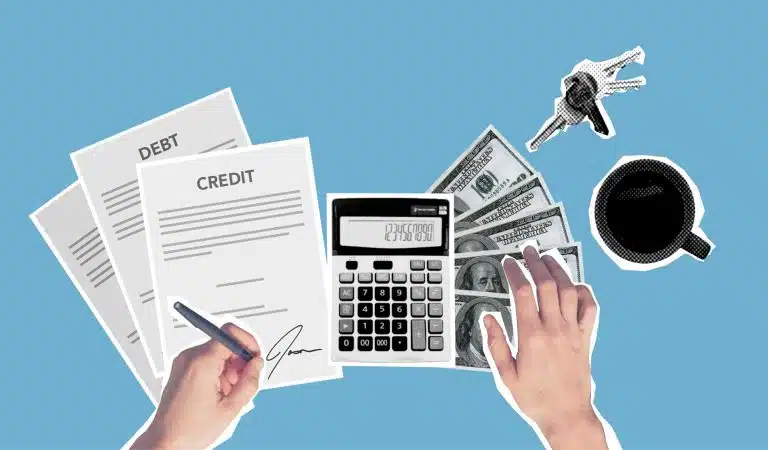When it comes to protecting your good credit and financial future, knowledge is power. Learning about tools like credit freezes is an important step toward money mastery.
In this in-depth guide, we’ll break down what credit freezes do, why they matter, and how to use them wisely. Keep reading for everything you need to know about credit freeze to make it work – not against – your goals.
Hold Up! Freeze! Let’s Define it First.
A credit freeze, also known as a security freeze, is a tool that can help protect your credit report from identity theft. However, placing a freeze on your credit report may also prevent potential lenders from accessing it, which could delay loan, mortgage, or line of credit approvals.
Credit locks, on the other hand, are typically paid services offered by credit bureaus with less legal protection than freezes. They offer the convenience of easy management through mobile apps but come with legal and cost implications compared to the free, federally-mandated credit freeze.
If you need to apply for credit with a frozen report, don’t panic! All it takes is a quick phone call or online request to temporarily “lift” or “thaw” the freeze.
What is a Security Freeze?
A security freeze, also known as a credit freeze, is like locking down your credit report. It restricts access to your credit report, making it much harder for identity thieves to open new credit accounts in your name.
When you place a security freeze on your credit report, the credit bureau won’t release your report to creditors, lenders, or other third parties without your explicit permission.
Think of it as a protective barrier that keeps unauthorized eyes from peeking into your financial history. This can be a powerful tool to prevent identity theft and safeguard your credit from unauthorized access.
What is a Credit Freeze? Why Should Borrowers Care?
A credit freeze restricts access to your credit report, making it an effective way to stave off identity theft. However, freezing your report isn’t something to do on a whim. Any time you apply for a new line of credit, loan, or mortgage, lenders need to check your credit usage and history.
With a freeze in place, lenders will be denied requests to view your report. This is where things can get tricky if you’re in the market for financing. A credit freeze can lead to automatic denials of applications for a new credit account, as lenders cannot access your report to evaluate your creditworthiness.
Whether you’re seeking a personal loan to consolidate debt or trying to get pre-approved for a mortgage, a frozen report means your application may be rejected or stalled once you lift the freeze.
How to Freeze Your Credit

Freezing your credit is a straightforward process that you can tackle online, by phone, or by mail. To get started, you’ll need to contact each of the three major credit bureaus—Equifax, Experian, and TransUnion—individually.
Be prepared to provide some personal identification information, such as your name, address, Social Security number, and date of birth. You might also need to show additional documentation, like a copy of your driver’s license or passport, to verify your identity.
Once you submit your request, the credit bureaus will freeze your credit report, effectively locking it down until you decide to lift it.
Taking a Deep Freeze on Your Credit Reports
In simple terms, it’s a security precaution that restricts access to your credit reports until you say otherwise. Each of the three major credit bureaus—Equifax, Experian, and TransUnion—allows consumers to freeze their files for free.
Once active, a freeze blocks identity thieves and scam artists from opening new credit lines or accounts in your name, even if they have your Social Security number. It’s like installing an ice maker in your financial basement – a proactive way to chill out shady characters hoping to loot your good name.
Credit Account Freeze
While freezes undeniably safeguard privacy, they also slam the freezer door on legitimate lenders. Anytime you apply for financing, such as an auto loan, mortgage, credit card, or personal loan, the lending company needs to view your credit report.
Criminals can utilize children’s personal information to open credit accounts in their names, and a security freeze can restrict access to such accounts.
But a freeze stops creditors cold, rendering your data essentially inedible. So, despite solid protection benefits, knowing how to defrost strategically is critical for maintaining money mobility. Let’s explore the process of melting down your freeze so opportunities don’t pass you by.
The Not-So-Frozen Chosen: When Frost Needs to Thaw
As careful as we try to be, life likes to spring unforeseen situations upon us. Perhaps the ancient furnace dies, or young Timmy needs braces – chances are a big expense will freeze you in your tracks at some point.
During emergencies like these, quick cash becomes an urgent necessity. But what if your credit file sits iced like the odds of an El Niño winter? No worries—with a little planning, frozen finance doesn’t have to mean frozen funds, either.
First, understand why lenders require credit checks. By surveying your payment patterns and debt load over time, they assess your ability and willingness to repay loans punctually.
Without this critical data, punting on your application becomes their safest financial play. So anytime a new line of store tic or store line of credit comes into your sights, you’ll want to defrost before sharing your application.
Common situations signaling a thaw include applying for:
- Personal loans to consolidate credit card debts
- Auto loans, whether new or used
- Mortgage pre-approvals and full applications
- Major credit cards or limit increases
- Private student loans for your kid’s college
- Small business financing if entrepreneurial endeavors call
Those are just some of the most typical cases. Bottom line: Keep all lender requirements on top of the fridge whenever sudden freeze lifts feel necessary down the road. And always allow extra time, as thaws rarely melt instantaneously.
How Does a Credit Freeze Impact Loan Approvals?
When a credit freeze is active, credit bureaus are blocked from releasing your credit report and score to potential lenders.
While most individuals cannot see frozen credit reports, exceptions include the individual themselves, current creditors, and certain government agencies.
By seeing what’s contained in your reports, lenders have enough information to confidently approve you for a loan or determine your interest rate. Some direct results of a frozen report could include:
- Automatic rejection of your loan application
- Substantial delays as your application remains on hold
- Inability to get a pre-approved offer or interest rate quote
- Higher interest rates or less favorable terms if approval happens
In summary, a credit freeze protects you but may prevent you from making instant credit decisions borrowers need when seeking a new loan or line of credit.
Who Can View Your Frozen Credit Report?
Even with a security freeze in place, some entities can still access your credit report. These include:
- You, the account holder: You can always view your own credit report.
- Current creditors and debt collectors: They need to monitor your existing accounts.
- Government agencies, such as the IRS: They may need access for legal or regulatory reasons.
- Child support agencies: They require access to enforce child support orders.
- Employers or potential employers: With your permission, they can check your credit as part of the hiring process.
- Marketers: They might use your credit report to send you pre-approved credit offers.
These exceptions ensure that necessary parties can still perform their duties without compromising your security.
Credit Freeze vs. Credit Lock
A credit freeze and a credit lock might sound similar, but they have some key differences. A credit freeze is a federally regulated tool that restricts access to your credit report, making it a robust defense against identity theft.
It’s free to place and lift, giving you control over who can see your credit information. On the other hand, a credit lock is a private service offered by credit bureaus that allows you to lock and unlock your credit report as needed, often through a mobile app.
While both tools can help protect your credit, a credit freeze is generally considered more secure and cost-effective.
How to Remove Restrictions with the Three Credit Bureaus
Now that you understand that freezing needs flexible solutions, let’s go grocery shopping for the ingredients to remove constraints. Each credit bureau sells “lift kits” through varying avenues:
- Equifax—Their website, equifax.com, allows freezing and lifting with a few clicks. To verify your identity from the dairy aisle, you’ll need a basic ID like your full name, birthdate, and Social Security number. Alternatively, dial their hotline at 1-800-685-1111 for slightly longer customer service checkout lanes.
- Experian – As the second biggest player, experian.com leads online like the express lane. Much like Equifax, establishing yourself at the registers requires first name, last name, birthdate, and SSN. Those waiting in conventional phone lines can also thaw through their 1-888-EXPERIAN number.
- TransUnion—The value of groceries in the trio. Both transunion.com and a quick call to 1-888-909-8872 help you unbox your report quickly so lenders can see what’s on the shelf. Their identity questionnaires match sister sites for a contactless experience.
While online approval usually rings up as soon as possible, phone or mail alternatives exist for traditionalists, too. Just stock up on extra patience, as unfreezing may still take one to three days, regardless of the method chosen. But armed with access codes and lift dates, your report will thaw as promised.
Handling Denials When Frost Bites Applications
Alas, not every shopping cart gets rubber-stamped at checkout. If, after defrosting, you encounter rejection slides like the “credit” application is frozen,” resist” throwing items in anger. Deep breath – there may still be frozen foods on sale elsewhere.
First, double-check that all three credit supermarkets show fully stocked shelves. Log in, call representatives, or request fresh reevaluations to verify that restrictions melted completely as paid.
Sometimes, freezers need double-takes to hit the off switch reliably. Additionally, placing a fraud alert on your credit report makes it more difficult for identity thieves to open new credit accounts in your name.
Next, wait to abandon your cart. Kindly ask for the denial cause and reapplying guidelines so your cart selects fresher financing next pass. Lenders may re-scan stock if they are confident freezer failures are resolved, especially for loyal customers.
Persistence and patience bear frozen fruits. With awareness about how freezes function in financing aisles, you’ll be able to work with freezes for—not against—your financial good.
Periodically scan shelves yourself, too, to prevent expiration date errors from sneaking into otherwise healthy credit cartons. Mastering credit climates ultimately boosts the odds of checkout approval down any frozen finance frozen food aisle.
Watch Out for Thaw Burns When Financing
We’ve devised credit freezing best practices at the macro level, but sometimes, tiny fine print bugs require troubleshooting, too.
Even normally well-regulated credit chest freezers can experience hiccups that leave behind freezer burn on reports, so a little post-thaw checkup never hurts.
Give files the sniff test by verifying that all identifying factors, like personal details and account names, match between bureaus. Headaches may arise if disparities signal deeper issues demanding closer audits.
Printouts help compare contents side-by-side for inconsistencies like forgotten late fees, errors in balances reported, or data attributed to the wrong person altogether.
Discovering flaws means contacting each bureau in writing through certified posts or their on-site complaints department.
Laws usually require investigations within 30 days for disputes. Just be warned that some burns necessitate longer repair time as bureaus sort fact from fiction. But nip any nasties quickly before creditors discover cosmetic frost damage, marring loan applications ahead of time.
With patience and practice, nobody needs to succumb to thaw anxieties whenever freezes melt or refreeze as seasons permit.
Arming yourself with credit commando intel keeps finances fit for any conditions ahead. Remember—knowledge makes the smoothest transactions during life’s life’s opportunities and obligations.
Reasons Borrowers Might Need to Unfreeze Their Credit
Most folks place a freeze with good intentions, unaware they may need quick access to their credit report down the line. Common situations include:
- Applying for a personal loan to consolidate debt
- Mortgage pre-approval or full home loan application
- Looking to increase your credit card limit
- Auto loan for a new or used vehicle
- Private student loan applications
- Seeking debt relief from a counseling or law firm
In these cases and more, proactively lifting any credit freezes can help the approval process go more smoothly.
When to Freeze Your Credit
You might want to consider freezing your credit in several situations:
- Not actively applying for credit: If you’re not planning to apply for new credit anytime soon, a freeze can protect your credit from unauthorized access.
- Victim of identity theft: If you’ve been a victim of identity theft, freezing your credit can prevent further unauthorized activity.
- Compromised personal information: If you suspect your personal information has been compromised, such as in a data breach, a freeze can add an extra layer of protection.
- Minors or incapacitated adults: Freezing their credit can protect them from unauthorized access and potential fraud.
Remember to keep your credit freeze PIN or password in a safe place, as you’ll need it to lift or remove the freeze when you need to apply for credit.
What to Do if Your Loan Application is Rejected Due to a Credit Freeze
If a lender denies your application and cites your credit freeze as the cause, keep hope. Make sure your credit report is now unfrozen by:
- Checking each bureau to verify the freeze has been lifted
- Calling the bureaus directly to double-check your report
- Wait 24-48 hours as sometimes lifts take extra time to process
You may also want to follow up with the lender. Explain the situation, provide your reference numbers from the bureaus, and ask if they’d be willing to re-pull your report now that the freeze is removed. Good communication can save future applications.
Fixing Errors on Your Credit Report After a Credit Freezes, just like regular credit mog, aren’t aren’t to report issues. In rare cases, errors may creep into your file even while frozen. Why should you check your reports periodically, especially before a major application?
If you spot a mistake, send disputes in writing to each bureau detailing the incorrect item and your evidence. Credit bureaus are required by law to investigate within 30 days. Getting errors corrected sooner rather than later could make all the difference next time a lender reviews your report.
While credit freezes offer important identity protections, they aren’t aren’t-and-forget-it tools if you anticipate needing new financing soon.
By learning how simple it is to temporarily lift freezes, borrowers can optimize their credit profiles and loan approval chances. With a bit of planning, a freeze should not prevent you from taking advantage of money-saving opportunities.
Conclusion and Insights
Credit freezes serve an invaluable role in protecting your privacy and finances from shady characters. However, they require adaptive solutions for upstanding individuals hoping to improve cash flow
through beneficial loans or debt management programs.
As this guide outlines, knowing how and when to lift freezes allows responsible borrowers to access credit rewards without undue risk.
While strong security rightfully remains a top priority, don’t let security measures strangle goals for greater financial stability, either.
With an advanced understanding of freeze functions and limitations, smart consumers can proactively unlock opportunities as needed. Whether exploring personal loans to pay off credit cards or enrolling in a debt relief program, temporary access to credit histories paves the way.
No More Freeze Your Credit with Lender Reviews
For those feeling overwhelmed by existing debt burdens, focusing on capable solutions becomes paramount. By obtaining a free consultation with a reputable organization, individuals gain clarity on customizing payments within reach.
Debt consolidators certified by agencies like the Better Business Bureau have track records of helping thousands resolve millions in liabilities through individualized plans. Unfreezing credit judiciously even assists the review process for such services.
If unpaid bills currently weigh heavily on your mind, lender reviews may provide the guidance needed to take control.
As a leading evaluator of debt relief firms, their reviews simplify selecting highly rated partners to ease financial tension. Don’t freeze mysteries or money matters dictate your path longer than required. The first step toward solutions starts with a simple visit to LenderReviews.org today.









